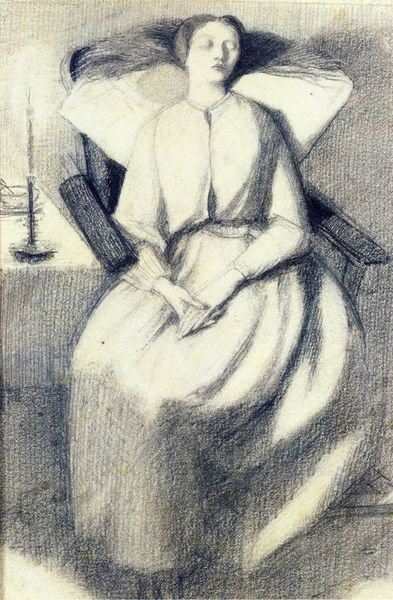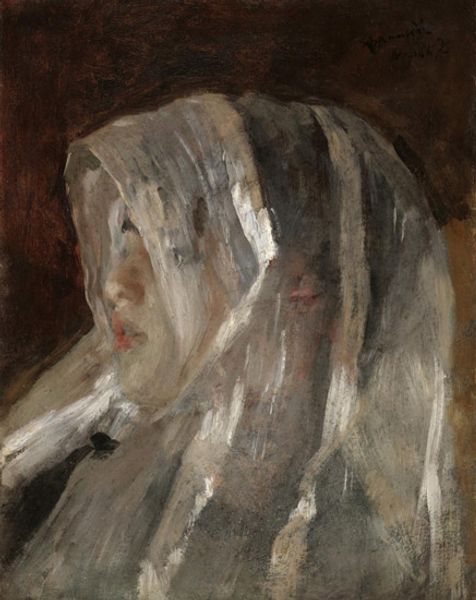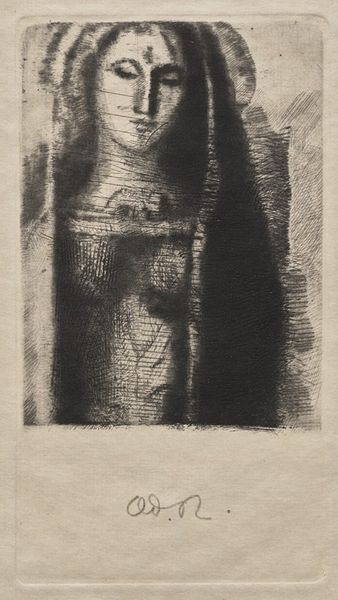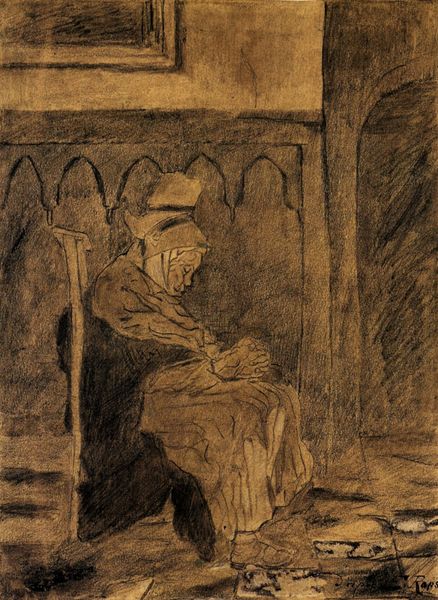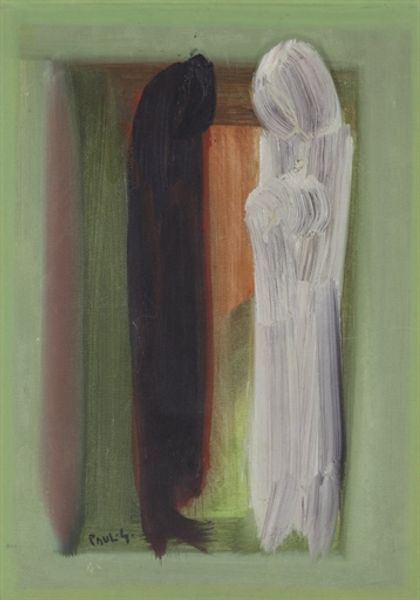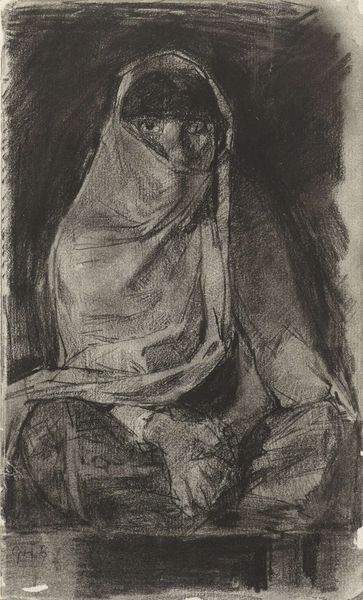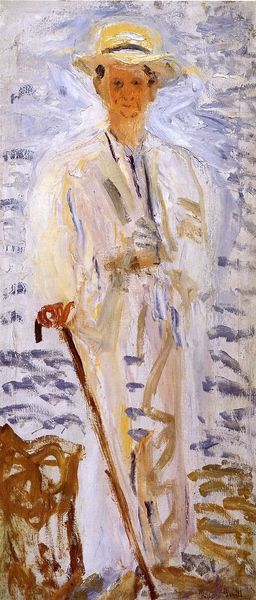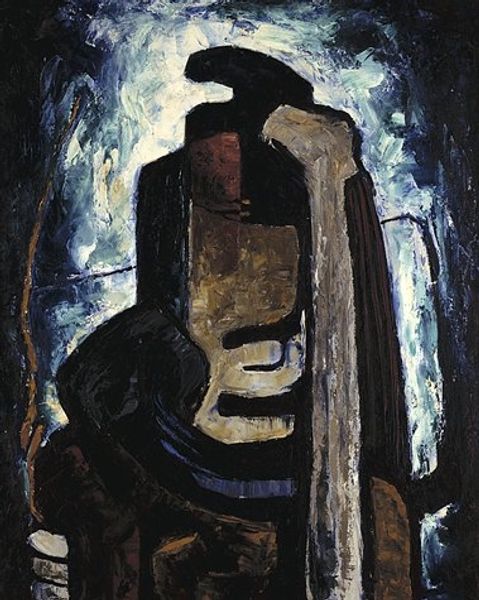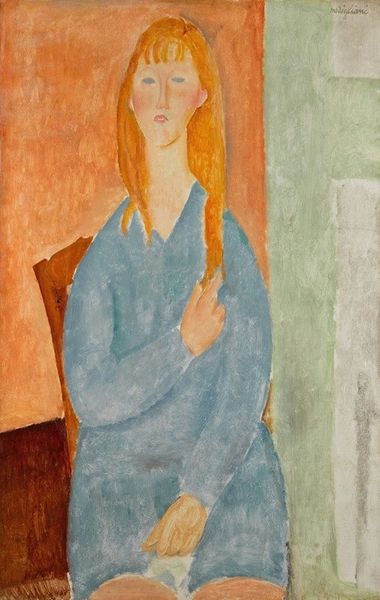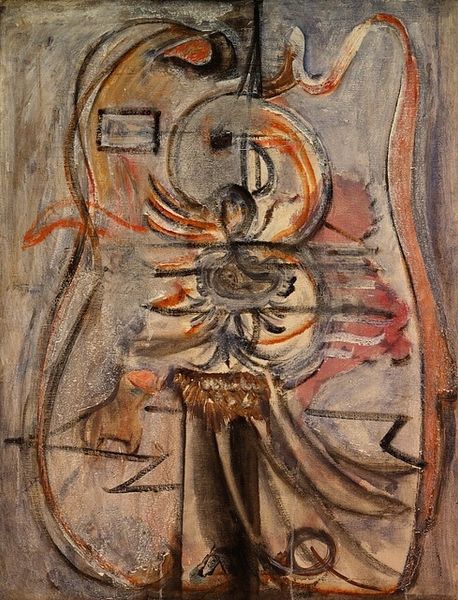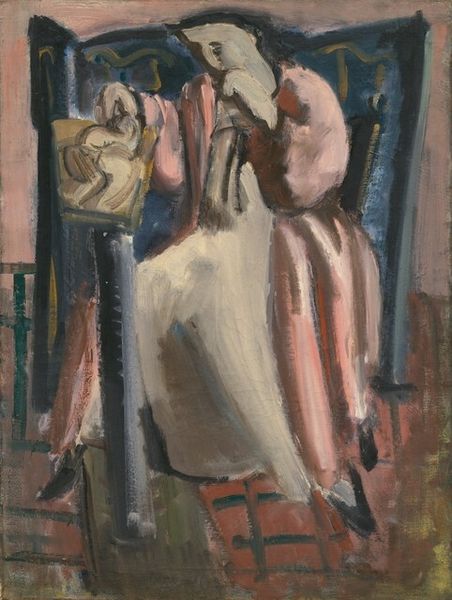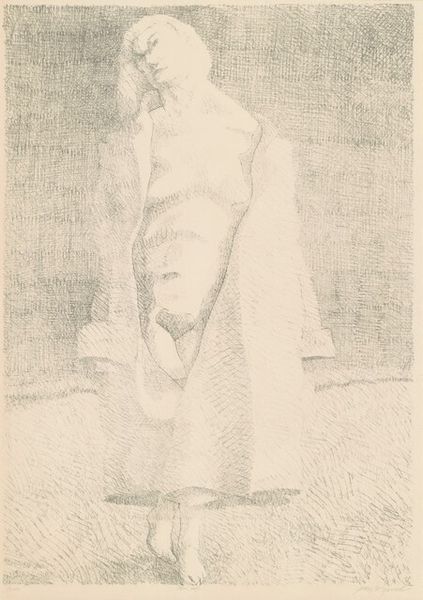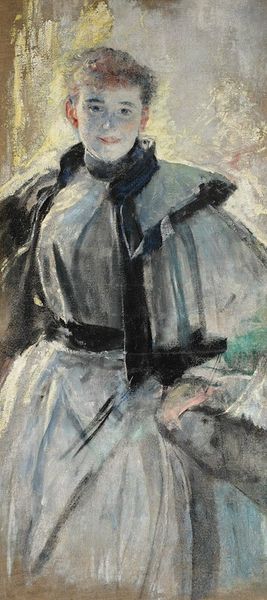
La temperanza, Woman Holding a Knife 1938
0:00
0:00
konstantinosparthenis
National Art Gallery (Alexandros Soutzos Museum), Athens, Greece
painting, pastel
#
portrait
#
painting
#
charcoal drawing
#
figuration
#
oil painting
#
pastel chalk drawing
#
pastel
#
history-painting
#
modernism
Dimensions: 84.5 x 62 cm
Copyright: Konstantinos Parthenis,Fair Use
Editor: We're looking at "La temperanza, Woman Holding a Knife," painted by Konstantinos Parthenis in 1938. It’s currently in the National Art Gallery in Athens. It’s rendered in these soft pastel colours. I find it quite unsettling – the figure seems both ethereal and quite severe. How do you interpret this work? Curator: It's compelling, isn't it? The title points us to Temperance, one of the cardinal virtues, often depicted allegorically. But instead of the usual imagery – moderation, pouring water – Parthenis gives us a woman with a knife. What does it mean to embody temperance, to restrain desires, with a weapon in hand, especially considering the painting was completed on the eve of WWII? Is this a call for a controlled, disciplined response to rising fascism, or something more ambivalent? Editor: So, the knife is not necessarily aggressive? It can represent a conscious, calculated effort towards maintaining…equilibrium? Curator: Exactly! Consider, too, the classical elements in the background, that fragmented architecture. Parthenis was deeply invested in Greece's classical heritage, layering it with modernist sensibilities. Could this figure be a modern-day priestess or even an ancient goddess? How does the artwork connect to notions of national identity and resilience during this turbulent period? The work might be seen as Parthenis asking: what strength do we as Greeks need to call upon? Editor: I see what you mean. It's much more complex than just a simple virtue. The socio-political landscape really transforms our understanding of the image. Curator: Indeed. And by thinking about gender and power – who gets to wield that metaphorical knife, who embodies "temperance" – we start to unravel even more fascinating questions within the work. Editor: Thank you. Now I understand what this painting is telling about a tumultuous historical period. It's empowering to approach artworks considering historical contexts and how intersectional narratives take shape! Curator: My pleasure. It's about understanding the visual language of resistance and resilience in an artwork that transcends simple representation.
Comments
No comments
Be the first to comment and join the conversation on the ultimate creative platform.
